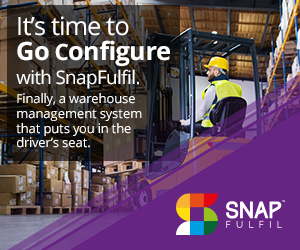Don't get left behind in the DC to D2C logistics evolution
The pandemic has accelerated the shift towards direct-to-consumer (D2C) with many global businesses experiencing unprecedented annual e-commerce growth of up to 35%.
We know this; because they can no longer cope and have directly asked for our help at recent supply chain insight summits. Inflexible legacy systems are straining under the weight and speed of the transformation required in the supply chain, so enterprise level brands and high-growth 3PLs are increasingly looking for more agile solutions.

Driving small pick efficiencies
What’s needed is a scalable, easily configured, API friendly and robust software solution that also delivers cost-effective pathways to must-have D2C fulfillment. After all, this boom is here to stay and will only escalate.
The key is being able to efficiently and consistently manage smaller ‘picks’, rather than traditional pallet and case orders, by allowing the flow of data and order of operations to be regularly updated and without lengthy, expensive and risky development cycles.
Additionally, remedial measures have to be quickly and inexpensively enacted. Highly configurable software means every aspect of the e-commerce fulfillment process can be automated, streamlined and made intuitive for floor staff and management.
It’s all about optimum efficiency with higher volume and smaller orders to satisfy customer demand for shrinking delivery timeframes.
Time to value
With minimal upfront costs and support expenses built into the license, technologically advanced cloud-based WMS software comes out ahead of hard-coded and rigid legacy alternatives.
It’s all about time-to-value and low total cost of ownership, because quick and easy digital onboarding (even remotely) means rapid return on investment and a system that starts working for you almost immediately.
You can experiment across multiple sites, yet be agile and responsive, and still be in control of your operations and budgets. This is opposed to a fussy and complicated on-premise system that can cost 20 times as much and take as long as 18 months of pain to bear fruit.
More nimble, configuration-based applications don’t restrict creative solutions either and support change management by empowering the business to easily store, organize, deliver and track the accomplishment of work throughout a facility.
On demand scalability
What’s more, the increasingly transactional nature of modern warehouse management requires on-demand scalability and reliable performance. This is where a more resource-based cloud pricing structure better supports customer needs, without them having to over-invest in cloud capacity that could remain unused.
Scope for quick and cost effective on-the-job realignment is vital – and the attractions and benefits for financial decision makers are tangibly lower overheads, bigger profit margins and superior customer service levels to name but a few.
Volatile flows will become more and more common as the supply chain is shortened with D2C activity – and promotions become a daily issue – so fast, accurate algorithmic-based forecasting enables immediate identification of problems as they happen. This means what precious little time you have can be better used to pre-plan stock moves as the order pool arrives and the picks are released.
Leading edge digital technology is now absolutely central to tackling new world order challenges and best utilization of premium D2C space. It is also key to satisfying more demand, staying competitive, plus managing all-important labor optimization.
Quite simply, those with ambitions to operate effectively in the e-commerce space – by meeting the ever fluctuating customer service demands and innovations that the established retailers are repeatedly introducing – must have the capability to seamlessly adapt and evolve.



